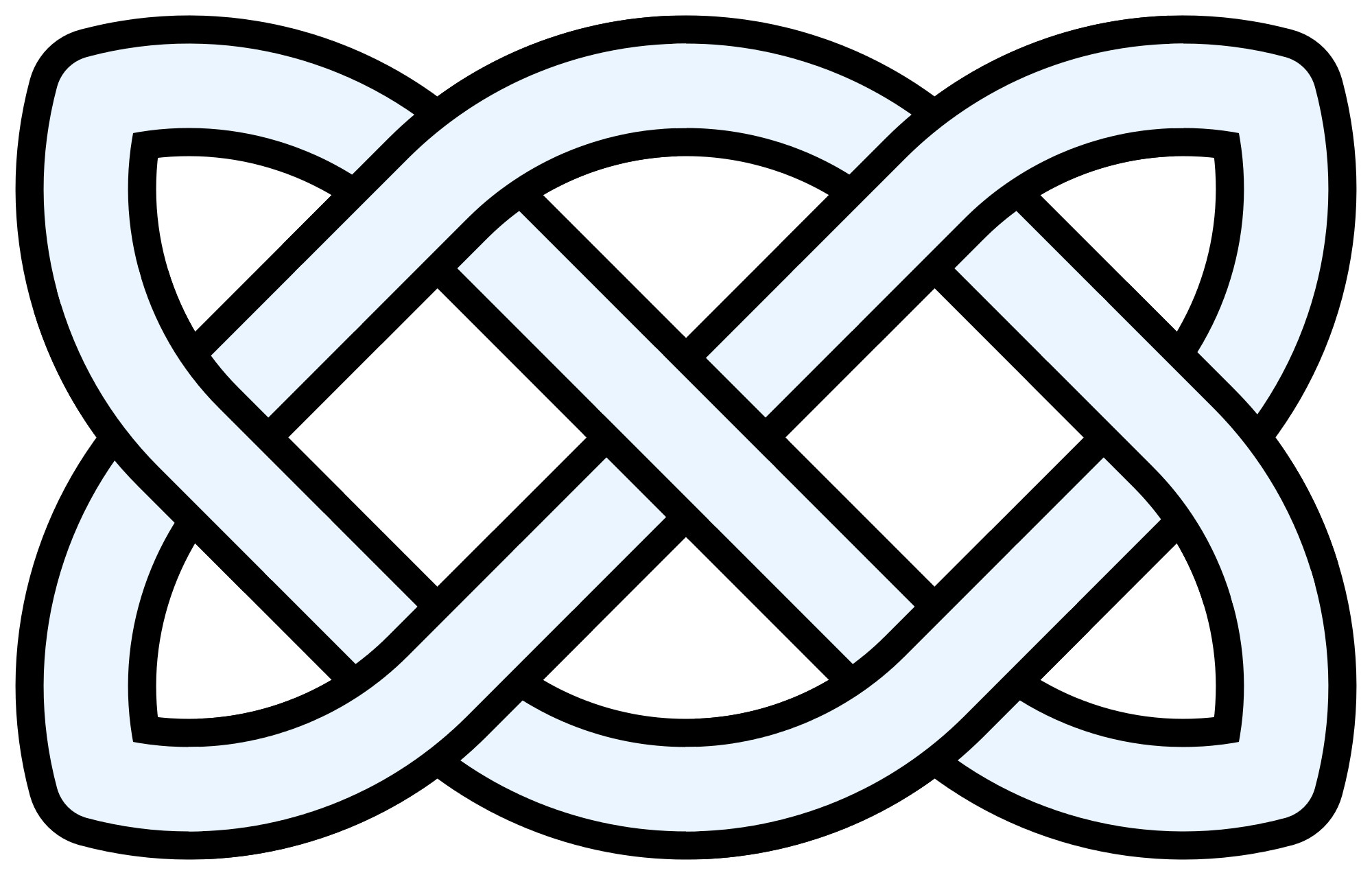Celtic Knots: Discover the Meaning Behind These Complex Designs
Table Of Content

Commonly thought to represent the father, son, and holy spirit, some people believe that hidden Pagans also used this symbol to celebrate the maiden, mother, and crone. Most commonly found on roman floor mosaics, this knot design was much loved through the Byzantine period and featured two interlaced oval shapes. The name for the Dara Celtic knot comes from the Irish word Doire which means Oak. This Celtic knot symbolized strength, wisdom, and power and was connected to the Oak tree, a very important tree in Irish Pagan beliefs.
History
Just as with all Celtic knots, Solomon’s knot serves as a bridge between historical traditions and modern interpretations, reminding us of the intertwined nature of our existence. Celtic knot designs have been documented as early as the third century A.D., as evidenced by their presence on Roman floor mosaics. Someone invented a design, posted it online and now people believe that it’s one of the ancient Celtic symbols. This symbol is believed to represent eternal love and the side-by-side design creates an endless interconnected flow of lines without end. Celtic spirals that are clockwise are believed to have a meaning connected to harmony or earth; if they are anti-clockwise they are thought to be pagan symbols that manipulate nature. The Dara Celtic knot is symbolic of the roots of the oak tree with the same symbolic source of inner strength.
The Trinity Knot
One popular belief is that the three points symbolised the cycle of life, death, and rebirth, with the endlessly looping pattern representing eternity. Also known as the Celtic Trinity Knot, the Triquetra has a strong connection to the Holy Trinity in Christianity. Indeed, the symbol’s earliest appearances in Celtic insular art are on religious manuscripts and stonework, from the time of Celtic Christianity. But please do note that it is a recent invention and not an ancient symbol. In particular, the deep, hidden roots of the tree are shown to provide as much strength and support as the visible branches.
The Prince of Wales's garden at Highgrove: Flowers galore, a wildflower meadow and a treehouse once used by ... - Country Life
The Prince of Wales's garden at Highgrove: Flowers galore, a wildflower meadow and a treehouse once used by ....
Posted: Sun, 19 May 2019 07:00:00 GMT [source]
Celtic Love Knot Symbol
There is an immense number of ways in which the Celtic knot, also known as the Irish knot, can be used. Druids were among the high-ranking professional, religious and law-keeping members of Celtic culture. Despite what you find online, there is no such thing as a Celtic symbol for new beginnings; it, along with many Celtic patterns you see online, is entirely made up. The meaning of the Celtic Motherhood Knot is one of enduring love between a mother and child, faith in God and the Celtic heritage. Celtic knots, called Icovellavna, include many knots used for decoration in the Celtic style of Insular Art.
What is the Celtic Love Knot meaning?
Today, it’s still a potent reminder to embrace serenity, even amidst life’s storms. The intricacies of the Knot of Luck echo the Celtic belief in the power of connections and relationships. Each twist and turn is symbolic of life’s journey, filled with both triumphs and trials. Staring at its symmetrical loops, you’ll also notice that they echo the sun’s ceaseless journey across the sky – a daily reminder of rejuvenation and rebirth. Embracing this symbol doesn’t just provide intellectual growth; it also fosters emotional safety amidst life’s uncertainties. This triad, with its three rays converging into one point, symbolizes the unity of opposites.
These Celtic patterns were not just mere decorations; they were symbolic representations and storytelling mediums of the Celtic worldview. In our opinion, the Dara Celtic knot meaning is the most straightforward, as the design represents the root system of a tree (i.e. it means strength). The more notable Celtic symbols and meanings are the Triquetra, the Celtic Cross, the Trinity Knot and the Dara Knot.


Also known as the Irish Cross, the Celtic Cross is one of the most well-known Celtic symbols. While not strictly a knot in itself, almost all Celtic Knotwork Crosses feature Knots in their design. It’s widely believed that the Serch Bythol Knot symbolises the joining of two souls, which is why many see it as one of several Celtic love symbols. Stemming from the Gaelic word ‘Doire’, which translates to ‘oak tree’, the Dara Knot is also widely considered to be a Celtic symbol for family.
Meaning Behind the Knots
We do know that it wasn’t originally a Celtic symbol, and it has appeared in cultures around the world and across the ages. In fact, versions of the Triquetra meaning from the Celtic Christianity period formed the sign of the fish, a symbol synonymous with Christianity. To this day you’ll find many people with deep Irish roots talking about the Triquetra representing, not the Father, Son, and Holy Spirit, but the Maiden, the Mother, and the Crone. The Trinity Knot (AKA the Triquetra symbol) is one of the more notable Celtic designs. This shows that while two individuals do exist, they’re now linked for eternity, represented by the circle formed by the joining of the two Triquetras. Some consider the three points of each Trinity Knot in the Serch Bythol symbol to represent mind, body, and spirit.
FAQs about the Celtic Triquetra
Celtic knots are patterned and often interlaced designs that have their roots in the Celtic civilization, who thrived around the beginning of the second century. Celtic knots have become fundamental symbols of Irish heritage and appear in almost all arenas of design in the West. Since the 8th century, Irish high crosses promoted various Celtic designs and biblical scenes to teach Irish communities about the Gospel. These knots have struck a chord with millions around the world but few get to enjoy and explore the true insights hidden within these magnificent ancient symbols.
Still, it can also be found in Islamic, Byzantine, Coptic and Ethiopian art throughout the ages. Let’s take a look at the history of Celtic knots, the different variations, and the meaning behind each of them. This basic square knot is a great starting point for beginners, and you can experiment with different grid sizes to create more elaborate patterns. Once you're satisfied with your pencil sketch, it's time to make your Celtic knot stand out with ink.
As a consequence, a number of the most popular designs have had meanings attributed to them within the last 150 or so years and we analyse them below. Most scholars believe that Celtic knots were developed for religious and secular purposes. In the Christian era, Bible manuscripts, Celtic crosses and jewellery were adorned with these symbols. However, historians are having difficulty ascertaining whether or not there was particular significance behind each complex design. It is likely that these knots were exchanged between couples in Celtic communities, similar to how we exchange wedding rings or other objects of affection today.
However, the endlessness of the Trinity knot, and in turn the Love Knot, represents eternity. It suggests an unending love and unbreakable bond between the two people who share the knot. So, while parts of it do go back hundreds of years, if you’re looking for truly authentic Celtic symbols for love, this isn’t it. Having said that, it’s a good design and makes for an accessible and relatable symbol, with deep Celtic undertones. These knots are not only exquisite pieces of art but also serve as a reminder of the rich history and symbolism woven into Celtic heritage. Shifting your focus to peace, you’ll find a unique emblem known for its serene message and intricate design.
A smooth surface will make it easier to create clean, precise lines for your Celtic knot designs. Yet as we mentioned in the introduction, it does seem as if the interlaced designs was a reflection of the Celtic belief in life’s interconnectedness and continuity. In the modern era, some designs have had meanings attached to them based on personal interpretation. Yet some historians believe the origins of Celtic knots could be dated right back to 500 B.C although there appears to be scant evidence to back up that assertion.
Adorned in Celtic knotwork, this symbol also signifies the interconnectedness of all life, assuring you of the continuity and security inherent in nature’s cyclical patterns. In Christian traditions, the knot connects with the Holy Trinity, further enriching its significance. Understanding the deeper Celtic knot meanings can enrich your appreciation for this ancient art form. The Dara Celtic knot has an interwoven design that’s influenced by the roots of an ancient oak tree, with an interwoven design mimicking the inter-tangled roots of an oak tree. Indeed, the name “Dara” comes from the Irish word “doire”, which means “oak tree”.
Comments
Post a Comment